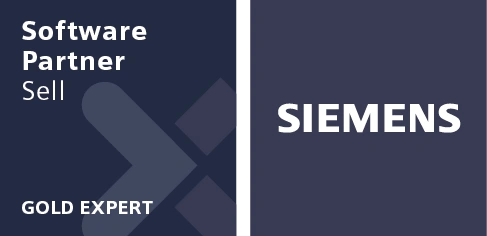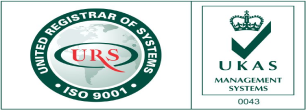
SMART FACTORY
The need to become a digital enterprise
Take a step toward Industrie 4.0 and secure your competitiveness with scalable solutions from Siemens. Now is the time to start – become a digital enterprise to stay ahead of the competition.
Manufacturing companies are facing huge challenges
Digitalization changes all areas of life and also existing business models. This increases pressure on the industry – but opens up new business opportunities at the same time. Industrial enterprises need to reduce time to market significantly, massively improve flexibility, and increase quality while reducing energy and resource consumption. Another general requirement is security. Digitalization also leads to increasing vulnerability of production plants to cyber attacks – and this increases the need for appropriate security measures.
Industry 4.0 represents the fourth industrial revolution in manufacturing and industry. Industry 4.0 is the current industrial transformation with automation, data exchanges, cloud, cyber-physical systems, robots, Big Data, AI, IoT and (semi-)autonomous industrial techniques to realize smart industry and manufacturing goals in the intersection of people, new technologies and innovation.
Industry 4.0 creates what has been called a “smart factory”. Within the modular structured smart factories. Industry 4.0 is more than just a flashy catchphrase. A confluence of trends and technologies promises to reshape the way things are made.
Industry 4.0 as the next phase in the digitization of the manufacturing sector, driven by four disruptions: the astonishing rise in data volumes, computational power, and connectivity, especially new low-power wide-area networks; the emergence of analytics and business-intelligence capabilities; new forms of human-machine interaction such as touch interfaces and augmented-reality systems; and improvements in transferring digital instructions to the physical world, such as advanced robotics and 3-D printing.
Smart Factory
A Smart Factory is a fully digitalized factory model representing a production system, a digital twin for production, which is completely connected to the main PLM data repository via sensors, SCADA systems, PLCs and other automation devices. In such a smart factory, all the events happening on the shop floor during production are recorded and the relevant ones are pushed back to the PLM system either directly or through the cloud.
A Smart Factory is based on a set of manufacturing concepts such as full connectivity, flexibility, agility, lot size of one, parts, sub-assemblies and products moving on (automated guided vehiclesAGVs). With no pre-defined route, the AGV moves from station to station, based on the manufacturing process plan, but can re-plan its next location of production/machine and assembly/inspection station, based on availability.
Siemens has tools that can be deployed today that can provide accurate energy and CO2 data during production.
Reducing time-to-market
Due to faster-changing consumer demands, manufacturers have to launch products faster – despite rising product complexity. Traditionally, the big competitor has beaten the small one – but now the fast one is beating the slow one.
Enhancing flexibility
Consumers want individualized products – but at the prices they’d pay for mass-produced goods. As a consequence, production has to be more flexible than ever before.
Increasing quality
Consumers reward high quality by recommending products on the Internet – and they punish poor quality the same way. To ensure high product quality and to fulfill legal requirements, companies have to install closed-loop quality processes, and products have to be traceable.
Increasing efficiency
Today, it is not only the product that needs to be sustainable and environmentally friendly – energy-efficiency in manufacturing and production becomes a competitive advantage, too.
Increasing security
Another general requirement is security. Digitalization also leads to increasing vulnerability of production plants to cyberattacks – and this increases the need for appropriate security measures
ADVANCE PLANNING AND SCHEDULING Software (APS)
Manufacturers cannot react quickly and intelligently to changes without planning & scheduling tools. The time it takes to generate a schedule using spreadsheets can take hours or even days and it can be difficult to maintain. If there is an unexpected change, it is not easy to generate a new schedule.
SIMATIC IT Preactor APS can be installed straight out of the box, can be customized and configured where necessary, without disturbing the core Preactor code. It can be used standalone to manage planning and scheduling, and is also designed for integration with other software such as ERP, MES, Data collection, Forecasting, Demand Planning and OEE applications.
SIMATIC IT Preactor AS is a scheduling tool primarily for manufacturers who need to schedule machines, production lines and resources, but Preactor is also used in services and logistics. With many case studies, it has been proven successful across most industry sectors including Aerospace and Automotive, Engineering, Food and Beverage, Consumer Goods and many more.
SIMATIC IT Preactor AP is an essential planning tool for companies who want to enhance competitiveness, increase profits and improve customer service. Effective purchasing of economic quantities of raw materials and timely use of this raw material is key to reducing one of the greatest production problems; unnecessary high stock levels of both finished product and raw materials; and the possibility of this stock reaching its sell-by date before being consumed.
Closing the loop from real to virtual can help a manufacturing company achieve a high level of continuous improvement, over time.


